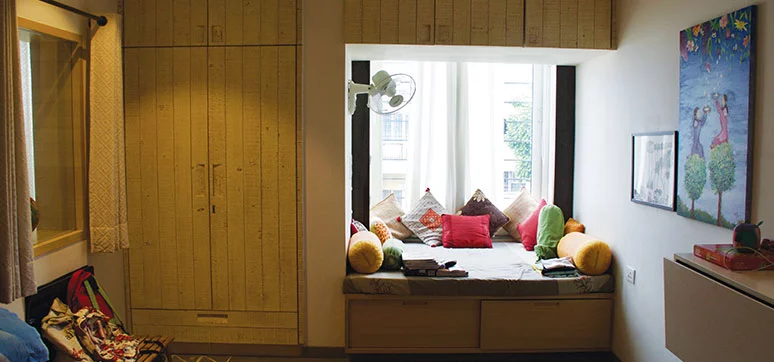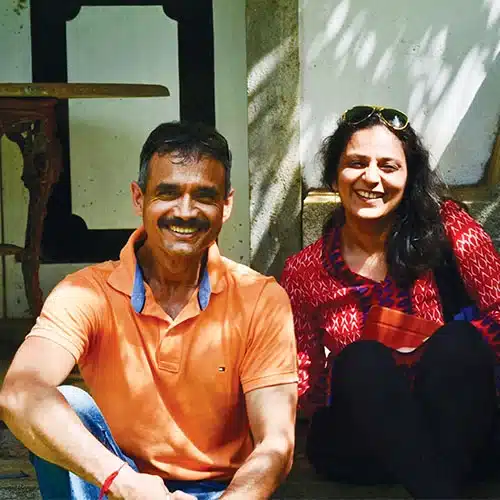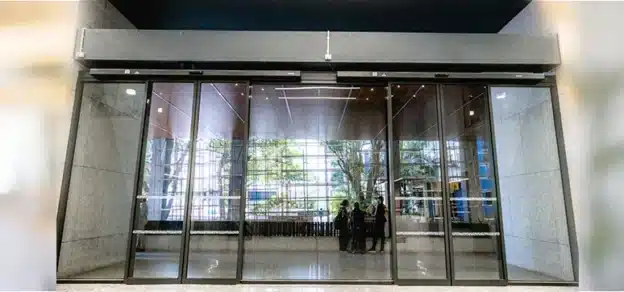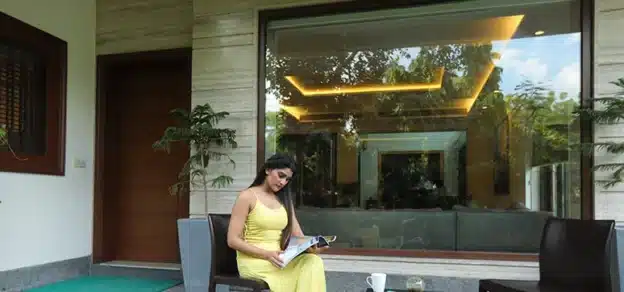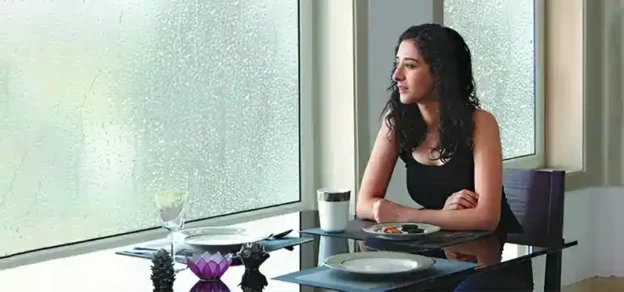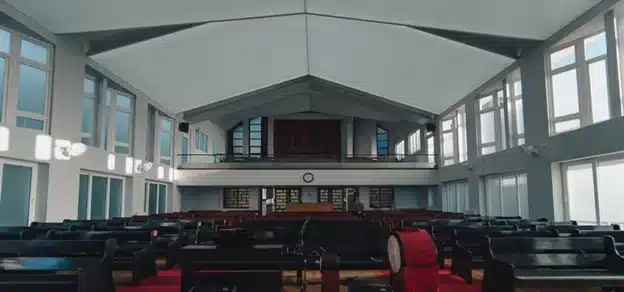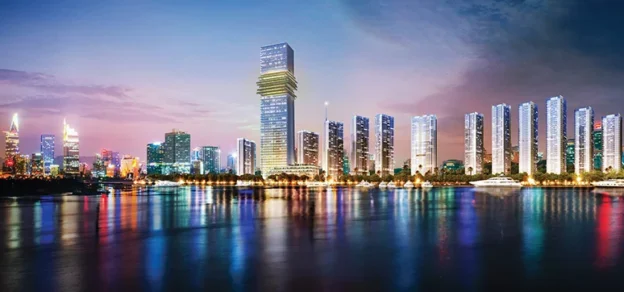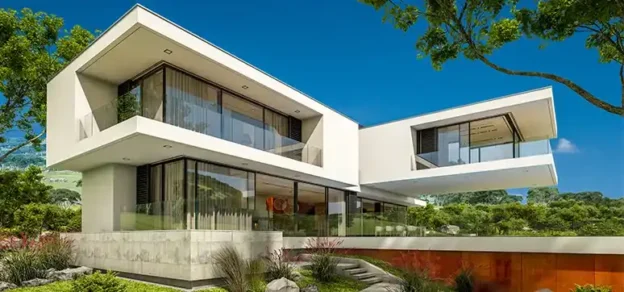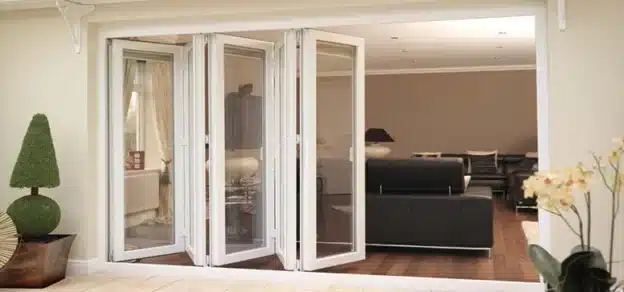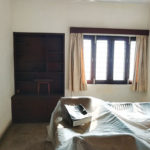
Windows is a dialogue – an interaction between elements – sometimes complementary and sometimes divergent. Windows is a way of deciding the language the dialogue should have, as well as the intonation, and that is really what sets the mood. Every project that creates a habitable space is constantly addressing the making of fenestration. It is the underlying dialogue that is created between the inside and outside, between the built and unbuilt.
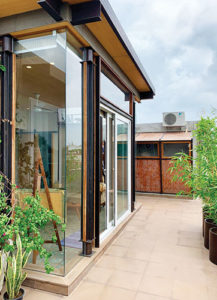
Materials: Combination of Mild Steel Structure Fixed Windows with a Sliding uPVC Window
Often there are certain features of design elements that are generalized and passive across different typologies of the built environment, however, windows are design elements that are heavily influenced by multiple factors like, heat, light, orientation and material. Most of these factors come into play simultaneously when it comes to the design of windows.
These are to some extent standardized in the case of certain building types such as commercial spaces, offices and institutions, in the case of residences, windows can take on an entirely different meaning. The selection of window types can be eclectic as in a residence design since there are almost no rules and one can respond completely to the honest requirement of the space or can be extremely particular to the usage at that location. It is this lack of rules that make it more interesting to study the windows in residences.
If one were to break down the design of openings, the sound knowledge of materials is the first tool that needs to be mastered when it comes to the design of windows. Since they are dynamic and literally moving elements, the role of engineering, structure and the science of movement are intrinsic in the design thinking for windows. This extends to the knowledge of hardware as well. Whether assembled and custom-designed or prefabricated, this knowledge in relation to windows is essential.
The unfortunate exercise of making windows airtight to avoid the exchange of air outside to inside is slowly becoming a key factor that could be placed second. While one was able to use traditional materials like wood with ease earlier, these allow for some natural cracks and crevices as they breathe and change form and respond to the environment like a living entity.
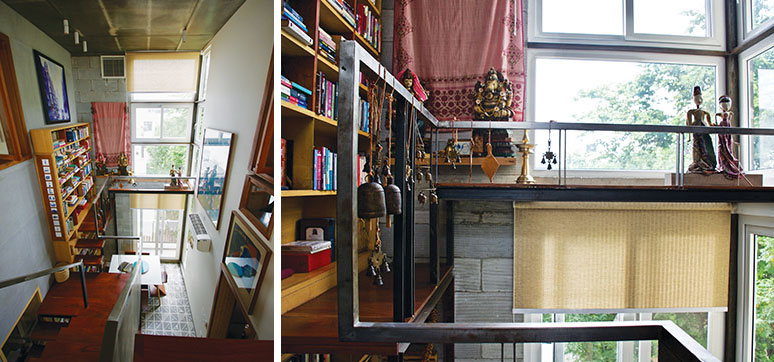
That to a great extent is now desired to be avoided. This is how artificial materials like metal and plastics are fast finding their way into homes. The other very important factor that is increasing impetus toward selecting these materials is us moving away from cutting trees and plants for building.
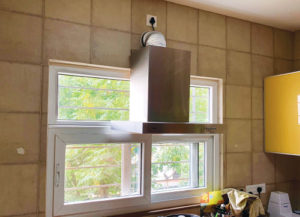
While wood allows for design intervention and customization right till the architrave that goes around the opening, artificial materials come in standard sections based on different uses. It is like the assembly of a kit of parts. As it is here to stay, the movement towards curtailing the mixing of environments and creating completely controlled indoor environments is also leading to windows that are, to a great extent, fixed and therefore not allowing too much of the option to open up. Selectively opening and largely fixing windows have created an entirely new language of design.

Renovation of residences opens up a whole new opportunity to redefine and reinvent. To be able to create something new from something old is an even bigger and more fulfilling challenge. Replacing, resizing and redefining windows is one of the powerful tools to create that change.

Pivoted Windows Across the Double Height Space are not Just a Visual Connection but Open for Communicating between the Two Floors. The Cistom Designed Central Pivoted Window Adds to the Interest Materials: Wooden Frames
Adlakha Residence Vasant Kunj, New Delhi
The windows were a key design tool for this renovation project of an existing government housing scheme apartment in Delhi’s Vasant Kunj area. Each window was created with a story and to fulfil a particular experiential purpose for the inhabitants. The making of each window was done as if it was a painting and the colours were the hard tools we use to make windows with, be it toughened glass, mild steel sections, uPVC or wood.

There were no rules of standard sills or lintels and if a window was to be experienced while sitting down, the lintel was pulled down to make it feel like it belonged there.
The other important design tool for windows was to create views and a visual connection between certain spaces. So, the windows between the rooms were the most special things in the house. It opened up a whole new way to remain connected as a unit.
Even though a house can be a composition of a series of rooms and movement from one to the other, windows were the tool to let the connection remain. The windows inside the house have contributed to giving a lot of depth to the experiences which become layered due to these. This was an inspiration from the family which resides in this home, and their interpersonal dynamics, individualistic yet forever connected.
Windows was the tool in this house design that allowed these abstract thoughts to be translated into a real experience.
QUICK FACTS:
Project: Adlakha Residence
Location: Vasant Kunj, New Delhi
Client: Geetika and Sanjeev
Architect: STUDIO 9491
Other Consultants: Structure – Vijay Agarwal
Materials Used for Façade & Fenestration: Mixed material – wood, metal, uPVC
Commencement date: March 2018
Completion date: January 2019
